| Home | Current show | Photography/Calligraphy | Show archives | Japanese pottery | Tea bowls | Sumi-e | Gallery tour | Wabi sabi |

Touching Stone Gallery Santa Fe New Mexico USA
www.touchingstone.com Email: director@touchingstone.com

Touching Stone Gallery Santa Fe New Mexico USA
www.touchingstone.com Email: director@touchingstone.com
Yukiya Izumita Aurora See 'Still Point' article on this artist (Ceramics: Art & Perception, v.91, p.80-83, 2013) Artist reception : July 27, 5 - 7 p.m. Exhibition: July 27 - August 22, 2012 |
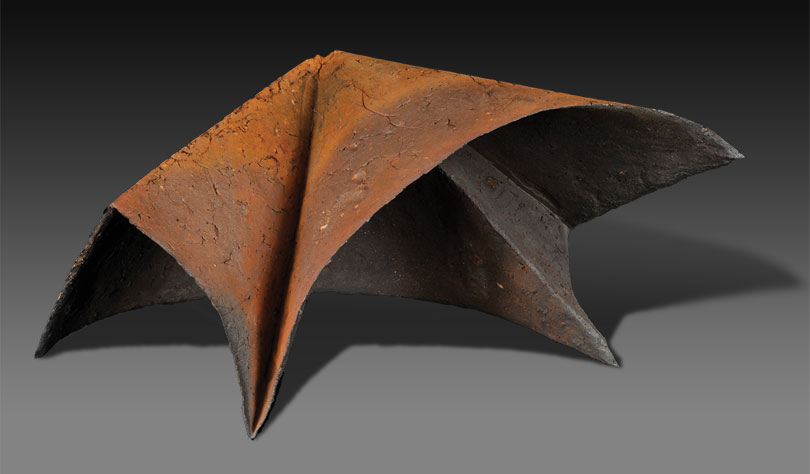 |
|
Aurora - Contemporary Ceramics of Yukiya Izumita 泉田 之也 Aurora, the mythical Goddess of Dawn, appears every morning and flies across the sky, bringing hope and renewal to a new day. On March 11, 2011, a powerful earthquake triggered a monstrous tsunami that devastated many coastal towns in northeastern Japan. Noda Mura, the home town of ceramic artist Yukiya Izumita, suffered a direct hit that leveled much of the town. Hundreds of homes were washed out to the sea with unimaginable human toll. Those who survived faced overwhelming difficulties to rebuild their town and lives. In the midst of this calamity, Izumita fulfilled his promise to complete the work for an exhibition in Touching Stone Gallery, barely three weeks after the disaster1. In the aftermath of this disaster, Izumita channeled his emotions to produce a spectacular body of work for the current show, entitled Aurora. Izumita (b. 1966) grew up in Iwate Prefecture in northern Japan in an area with high mountains, deep forests and beautiful sea shores. After college, he worked for three years in Tokyo but decided that the populous metropolis was not for him. In 1992, he followed his true calling and returned north to take up an apprenticeship in pottery making under Kokuji-yaki master Gakuho Simodake. In 1995, Izumita established his own kiln in Noda Mura in Iwate Prefecture. In the same year, his innovative work won an Excellence Award in the Nittshin Menbachi Grand Prize Exhibition, the first of a series of prestigious honors which include two Grand Prizes in the 2000 and 2002 Asahi Ceramic Art Exhibitions, and an Excellence Award in the prestigious Japan Ceramic Art Exhibition in 2009. The first impression of Yukiya Izumita's work is often one of amazement. One seldom expects to see clay honed to razor-thin edges, torn apart, twisted at impossible angles like giant origami, to create shapes that exude quiet beauty and tension, forms that appear unpolished and at the same time complete. Great technical expertise is required to create such work, which stands out even among the most creative contemporary Japanese ceramics. Beyond the innovative forms and technical brilliance, Izumita's creations are meant to convey deeper meanings. As an artist, Izumita feels a strong connection to nature, especially to the muted colors and roughness of earth in his surroundings. He has a keen sense of the changing seasons, the passage of time, erosion and decay that give texture and character to everything. Izumita has nurtured a strong emotional resonance to the beauty around him, and he wants to share his feelings with others through his ceramic work. To capture the raw power and beauty of earth, Izumita uses clay from his area, and blends in sand and stones to create a unique clay body with the right combination of resilience and texture. He keeps his forms simple, with purposeful lines and surfaces to convey his visions. He uses both a gas kiln and a wood-fueled kiln for different effects. Glazes are used only to complement his visions, with warm-toned glazes to enhance earthy textures, and cold-toned glazes to evoke water. The most important element in Izumita's work is hard to define physically: Passage of time is often implicit in each piece, whether it suggests deeply fissured boulders, a dried up and cracked stream bed, or jagged layers of erosion-exposed bedrocks. There is also a sense of mystery and wonder. Depending on one's perspective, the undulating patterns of his Aurora series may evoke the graceful Northern Light (Aurora Borealis) or powerful waves. Like optical illusions, they are Izumita's silent dialog with nature, reminders that beauty and decay, destruction and renewal are forever and inseparably intertwined. They are a tribute to the resilience, inspiration and hope of an extraordinary artist. 1. Izumita’s experience of the disaster will be published in an article entitled Still Point in Ceramics Art & Perception, Vol. 91, 2013. |
|
Click on images to view selected pieces Inquiry/order: director@touchingstone.com, see Inquiry/Order |
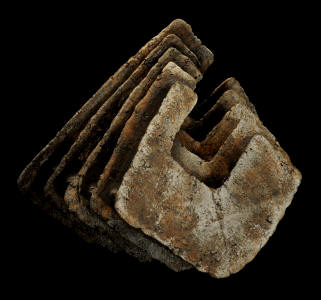 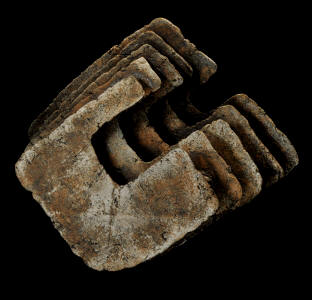
Aurora No.18 ceramic vase/sculpture 12.5" x 6" x 9.5"h (2 views) Sold |
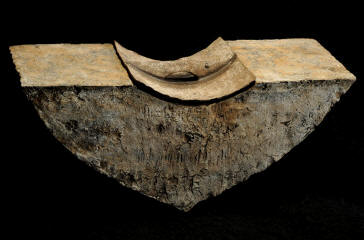 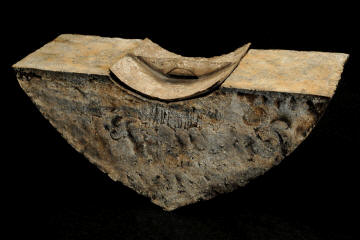 Aurora No.19 ceramic box/sculpture 13" x 5" x 5.5"h (2 views) Sold |
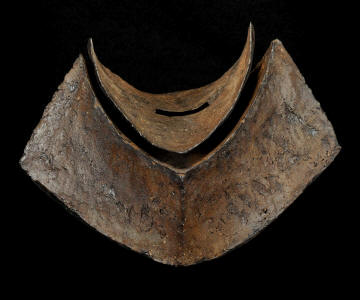 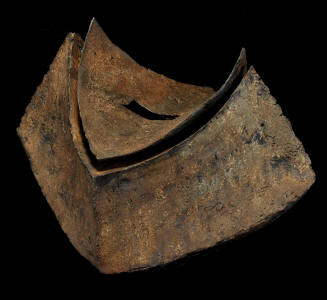
Aurora No.20 wood-fired ceramic vase/sculpture 12" x 10" x 9"h (2 views) Sold |
|
|
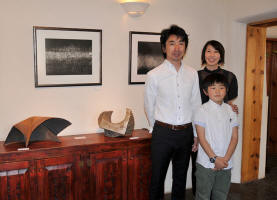
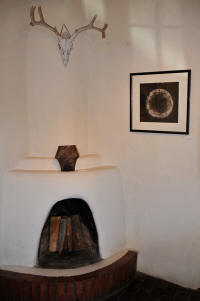 Izumita family at the opening reception Touching Stone Gallery, Santa Fe |
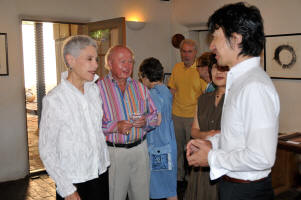 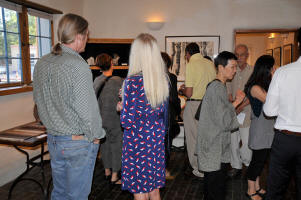 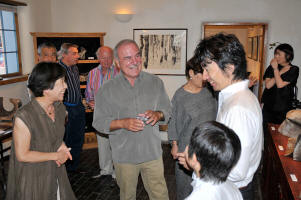 |
|
|
|
Solo Exhibitions 1996 Tanaka-ya, Hirosaki 1999 Kawatoku-kyubu, Morioka (5 times since 1999) 2000 Miharu-ya, Hachinohe (3 times since 2000) 2003 Ginza Renga Garo, Tokyo (4 times since 2003) Gallery Anri, Nagoya (2 times since 2003) 2004 Gallery Oiso, Kanagawa INAX Tile Museum, Tokoname Gallery Kaze-no-Kura, Yamagata (3 times since 2004) 2005 Miharu-do Gallery, Tokyo (3 times since 2005) 2006 Gallery Takubo, Sendai Gallery Kyoeigama, Tokoname 2007 Mumon-an Gallery, Tokyo Mitsukoshi Department Store, Sapporo Keio Department Store, Tokyo 2008 Mitsukoshi Department Store, Sendai 2009 Gallery Tourou, Nagoya Mitsukoshi Department Store, Sapporo Touching Stone Gallery, Santa Fe, New Mexico, USA 2010 Takashimaya Department Store, Okayama Mitsukoshi Department Store, Sapporo Touching Stone Gallery, Santa Fe, New Mexico, USA 2011 Contemporary Kogie Art Fair, Tokyo Touching Stone Gallery, Santa Fe, New Mexico, USA Galerie Barbara Ruetz, Munich, Germany 2012 Asia Week, New York, NY, USA Touching Stone Gallery, Santa Fe, New Mexico, USA Awards & Honors 1995 Excellence Award, Nittshin Menbachi Grand Prize Exhibition 2000 Grand Prize, 38th Asahi Ceramic Art Exhibition 2002 Grand Prize, 40th Asahi Ceramic Art Exhibition 2004 Invitational, 22th Asahi Modern Craft Exhibition 2009 Excellence Award, 20th Japan Ceramic Art Exhibition |